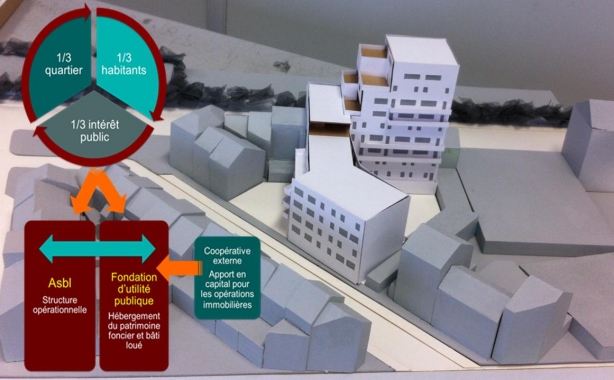Learning from each other: Brussels speaks English
Scanning innovation in housing policies (2/3)
Brussels, 24 June 2014 | Social, Urban, Economy
Community Land Trusts use dual tenure legal arrangements to provide permanent affordable housing and improve the liveability of neighbourhoods. This is the 2nd part of our blog series on "innovation in housing policies".
By Eduard Cabré Romans
The Community Land Trust (CLT) model is rooted in the civil rights movement that took place in the United States in the 1960s. The first CLT was established in Georgia (US) to make land ownership more accessible to African-American farmers. Since then, CLTs have expanded all around the US both in rural and urban areas (over 260 according to the American CLT Network), as well as in the United Kingdom (150 according to the British CLT Network).
This model is a form of shared equity homeownership that ensures property affordability through sale-restriction mechanisms. CLTs have a dual tenure structure, where the owner of the land is a non-for-profit organisation usually made up of the users, community representatives and public administrations. The ownership of the buildings falls exclusively on the users. In this model, the CLT leases the land to the property owners through long-term ground leases, and makes sure that the sale of the property is governed by a resale formula that avoids speculation and keeps housing affordable. Once the ground lease is over all the properties go back to the CLT, which is committed to create a stock of permanently affordable owner-occupied homes.
Read MoreThe owners of the homes built in a CLT have almost the same rights of ownership that are held by the owners of deed-restricted homes. They also share the same restrictions on the use and resale of the homes, committing themselves to preserve housing affordability. In addition, the participation of the community (private non-for-profit organisations and public administrations) in the government of the CLT also ensures the engagement of the members with their surroundings. That is why the CLT model has mainly been implemented in accordance with public housing policies and neighbourhood refurbishment programs, especially in urban areas.
But, can this model be exported to other countries? CLT Bruxelles found out about CLTs in a conference in France and by visiting Champlain Housing Trust (UN’s 2008 World Habitat Award) in 2009, and has been working on its implementation in Brussels since then. Until now, they have succeeded in creating the CLT, involving the future users in its government, and getting public funding to buy three pieces of land. Controlled resale pricing is expected to retain the original government support for the benefit of future homeowners. The financial instruments to develop the three projects are now being settled: savings from the users and mortgages from ethical baking. At the same time, Brussels’ Regional Government has recognised CLTs, that are to be managed through public utility foundations (Fondation d’utilité publique) composed by the users (habitants), representatives from the neighbourhood (quartier) and the public administrations involved (intérêt public).
Supporters of the model claim that its flexibility can be useful to combat a range of problems affecting communities such as gentrification, foreclosures, affordability issues, discrimination and segregation, or disinvestment. In the case of Brussels, the CLT is intended to overcome the barrier posed by land prices while making it possible to low income households to access a long term housing solution.
Eduard Cabré Romans is a researcher at the European Social Housing Observatory of CECODHAS Housing Europe.
Leave comments